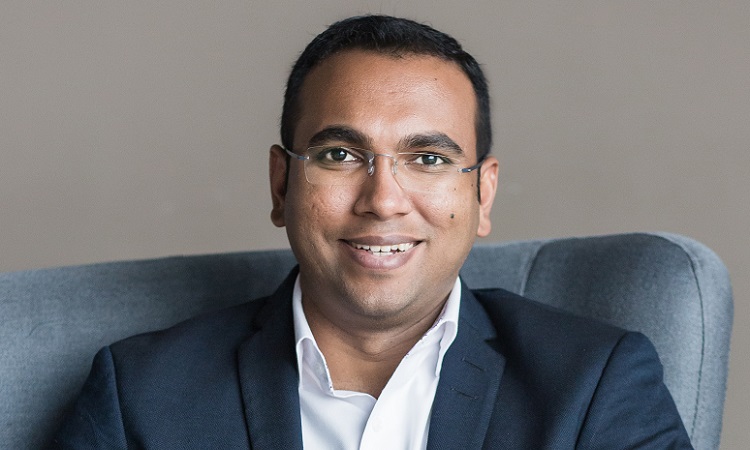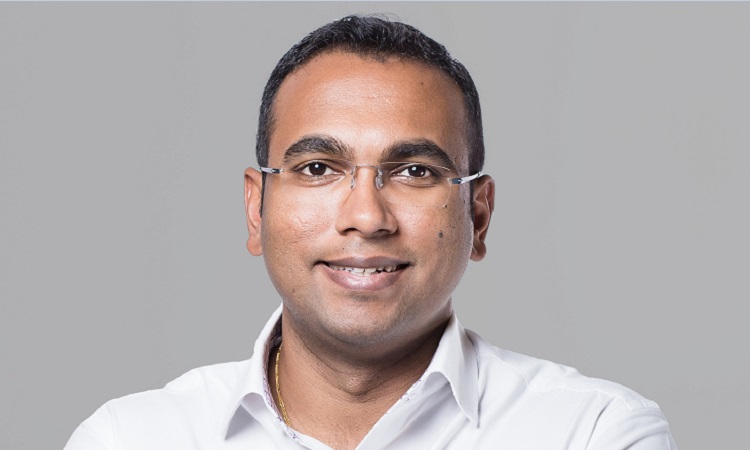Ramesh Rajandran is a very unique professional. At the tender age of 17, he became the youngest employee of Microsoft Malaysia. At that time, the company’s then managing director Butt Wai Choon spotted his genius and brought this enterprising young man into what was then the most powerful and influential software company in the world.
Over the years, Ramesh’s career evolved, and it was only natural for him to head upwards. Telenor headhunted him, and he soon became their vice president of digital and distribution. Following that, he then assumed the role of Apple Malaysia’s iOS business lead.
Today, he is principal director of Accenture Interactive, one of the largest end-to-end providers of digital transformation capabilities in the world
Accenture Interactive is regarded as the leader in Gartners 2018 Magic Quadrant for Global Digital Marketing Agencies, and named by Ad Age as the World’s Largest Digital Network for the third year running.
“Long and short of it all, we help our valued clients pivot from thinking digital to being digital at the core,” said Ramesh.
Throughout the interview, Ramesh offered some interesting insights, especially as to how a major technological shift has been happening, enabled by lower costs and the embedding of tech components – cameras, microphones, speakers etc.
“It’s a huge ‘reset’,” emphasised Ramesh. “We are seeing companies leveraging their digital and data assets to improve end-users’ experiences. This will have implications for brands and organisations — both in terms of their team structure, and how they develop products and experiences..
 Ramesh also notes that, the rise of a new marketing environment, neither online retail nor bricks-and-mortar, sees algorithms performing the role of gatekeeper between consumers and brands. AIs are used in messaging apps, chatbots, and many other customer interaction channels.
Ramesh also notes that, the rise of a new marketing environment, neither online retail nor bricks-and-mortar, sees algorithms performing the role of gatekeeper between consumers and brands. AIs are used in messaging apps, chatbots, and many other customer interaction channels.
“Brands will need to learn to navigate and engage with these AI gatekeepers, exploring which aspects of their brand architecture to play up or play down,” Ramesh further said.
Here’s the interview in full:
Question: Can you share a little more about how you view the digital advertising landscape in Malaysia?
Ramesh: The advertising landscape here in Malaysia has seen similar challenges to other markets with the rise of digital. eMarketer’s latest report on Digital Media spend states that “Digital media will account for 43.5% of investments, thanks to rising global ecommerce spending and shifting viewership from traditional TV to digital channels. By 2020, digital’s share of total advertising will near 50%.” With the digital landscape experiencing double digit growth[1] agencies now not only offer advertising but have expanded to offer digital marketing services
We have seen a wide spectrum of companies’ efforts to go digital. There are those just starting out to establish a new digital presence, mainly through social media or websites. On the other hand, more CMOs are recognising that reaching the online consumer is not about simply moving ad spend from traditional media to digital. Brands are now built by creating experiences for their consumers from end-to-end of their journey with the company.
Question: What trends do you predict evolving in digital here over the next few years?
Ramesh: Accenture has released Fjord Trends 2018, its 11th annual report that examines seven emergent trends expected to impact business, technology and design in the year ahead. Fjord Trends 2018 draws upon the collective thinking of Fjord’s more than 1,000 designers and developers around the world and is based on first-hand observations, evidenced-based research and client work.
Each of our 2018 trends is born out of a fundamental tension – be it a shift, a collision or a parting of ways. Digital versus physical, human versus machine, centralised versus decentralised, speed versus craft, automation versus control, traceability versus anonymity. Out of the seven trends, I’d highlight several shifts that are particularly applicable here in Malaysia.
1. Physical Fights Back
- For the last 5 years, services have been designed around and limited to touchpoints available to us – PC, mobile and analog touchpoints. But there has been great concern over screen addiction. According to a survey by MCMC, Malaysians spend over four hours on the Internet.
- A major shift is happening in technology, enabled by lower costs and the disaggregation of tech components such as cameras, microphones, speakers and screens which are increasingly embedded in different environments – especially in the home. We now see digital brands making an effort to ensure they have a physical presence too, while leveraging their digital and data assets to improve users’ experiences.
This will have implications for brands and organisations — both in terms of how their teams are structured, and how they develop products, services and experiences.
2. Slaves to the algorithm
- We are looking at a new marketing environment, which is neither online retail nor a bricks-and-mortar store. In this “third space,” algorithms are performing the role of gatekeeper between consumers and brands. Artificial intelligence (AI) sits in messaging apps, chatbots etc. AI don’t notice (nor do they care about) branding efforts, celebrity endorsements, or publicity campaigns — and they will soon sit squarely between an organisation and its customers.
- Brands will need to learn to navigate and engage with these AI gatekeepers and explore which aspects of their brand architecture to play up or play down. Brands dependent on visual cues in an auditory world where voice-enabled recommendations and transactions are the norm may suffer while existing brands with strong names will have a massive advantage.
- A key consideration will be for whom does the AI work – for the user or for the platform. Alexa, for example, works for Amazon, often prioritizing Amazon Prime products.
3. Design outside the lines
- Although it is encouraging to see Design Thinking being adopted more and more, the increasing demand for products to be delivered and scaled fast, is crippling the creativity of design.
- We’re fortunate to have access to richer data than ever before, thanks to AI and this is a golden opportunity as long as it’s in the hands of someone who knows what to do with it. We see too many prescriptive approaches leading to lookalike design. So many apps and logos now look the same.
- Design is an important problem-solving tool, capable of ensuring powerful market differentiation. To harness the potential of design craft, companies need to focus on three core pillars: depth in design craft; design processes, tools and team structures; and breadth of design skills.
Question: What do you feel are the greatest barriers local companies face when it comes to digital advertising?
Ramesh: In this day and age, every company faces a common digital imperative: Harness the power of digital technologies to become more effective, innovative and disruptive. A company cannot expect to reach their consumers through a slew of digital experiences without having digital capabilities within their own processes and operations. So when it comes to digital advertising, it must be powered by AI, fueled by data collected digitally, and creatively presented to its consumers throughout the entire experience. Digital transformation needs to be an enterprise-wide undertaking.
Artificial Intelligence, robotics and cloud are some of the other trends that will impact businesses in the coming years. These will help to raise productivity and efficiencies. More upcoming trends to look out for include understanding the impact that emerging technologies such as blockchain and quantum computing will bring. For instance, blockchain will become a powerful marketing tool as it has the ability to track marketing campaigns more effectively as well as posing the challenge of removing the media middleman due to the ability to decentralise.
We also see a great many companies still stuck with merely adapting their advertising campaigns for digital channels. Those efforts are not targeted to individual consumers who are now demanding personalisation. Companies need a more sophisticated approach to the capture, management and use of data – turning customer data into ‘customer genomes’, living profiles of preferences, motivations and needs that go beyond what customers choose, to an understanding of why they make those choices.
Question: Can you give a broad overview of the ways in which Accenture Interactive can help them with that?
Ramesh: Accenture Interactive helps clients create the best customer experiences, across the entire customer journey. By combining a human-centered approach with robust methodology, we make complex systems simple and elegant, making brands easily recognisable.
Design is at the heart of what we do and the focus is always first on the customer. Our ruthless focus on the customer enables us to create differentiated customer experiences that build engagement not just with customers, but with partners and also employees.
A key part of Accenture is that we are able to combine and integrate our capabilities strategy, consulting, technology, operations and digital to offer and deliver end-to-end value. Together with our Innovation Centres around the world, we help clients experience continuous innovation to create unique, customised client experience At Accenture, we are backed by a whole range of capabilities and so we are truly free to reimagine and implement the best customer experience for our clients.
Question: Many businesses in Malaysia are finding it necessary to undergo digital transformation in order to survive. What plans does Accenture have to help them? Will those plans involve a similar digital hub as the one found in Singapore?
Ramesh: Digital transformation challenges every company to rethink fundamental processes. However, a holistic corporate-wide transformations take a long time to execute. Such transformations are a must, but many revenue lines and products cannot afford multiple years to enter new innovation cycles. The market will not wait. That’s why we ourselves are transforming to lead in the New. We adopt an innovation-led approach in helping clients develop and deliver disruptive innovations, and to scale them faster. Through the Accenture Innovation Architecture, we are uniquely positioned to help organisations take advantage of technology disruptions and seize growth opportunities enabled by new digital innovations.
From research, ventures and labs to studios, innovation centres and delivery centres, we help companies imagine the future and bring it to life. As they are located all around the world and we actively engage, customise and also expand these experiences for our clients accordingly.
Question: Increasingly, Malaysian businesses are encouraged to leverage on technology. Does Accenture have any plans to work with MDEC on any initiatives?
Ramesh: With Accenture’s end-to-end capabilities to transform whole enterprises, we are already actively reimagining Malaysia in industry, in society, in government. Malaysia has the advantage as an emerging economy that we can leapfrog the legacy technology and leapfrog to the latest innovations.
Earlier this year, we signed an MOU with MIMOS to help accelerate the adoption of homegrown technologies. It is hoped that this will stimulate development of business and entrepreneurship opportunities in the country. We are also keeping a close watch on the innovation scene in Malaysia. Last year, we produced the Malaysia Digital Performance Index where we analysed top companies in Malaysia across several industries to gauge their digital readiness and capabilities. We found that though many companies have already started on their digital journeys, much more need to be done faster.
Question: How strong is Accenture’s presence in the country and are there any plans for expansion of operations in the near future?
Ramesh: In Malaysia, Accenture is reimagining itself and also the country. Accenture’s capabilities and team strength across its five business areas – Strategy, Consulting, Technology, Digital, Operations – are always agile according to business or client needs. And backed by the Accenture Innovation Architecture, we’ll be focused on an investing in innovation for Accenture and our clients.
For the Accenture Interactive team here, we are building a solid team with expertise in customer experience, digital commerce and content. We expect to see a continued rise for our services as more Malaysian companies recognise the imperative to redesign their customer experiences. We are constantly looking for those who are curious, engaged with the latest trends and tech, and willing to challenge the old. And with the millennials making up more and more of the consumer, often it takes the young to speak to the young.
Question: Finally, what is Accenture Interactive’s value proposition and what do you bring to the market?
Ramesh: Accenture Interactive not only design customer experiences and architect them through technology, processes and systems. We also manage them. It’s not just about creating then leaving it with the client, but to continue iterating it in response to the changing market and technology innovations.


